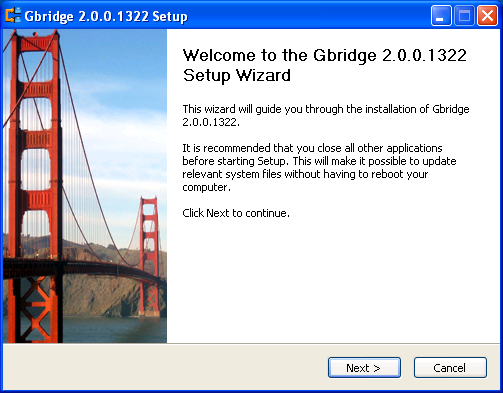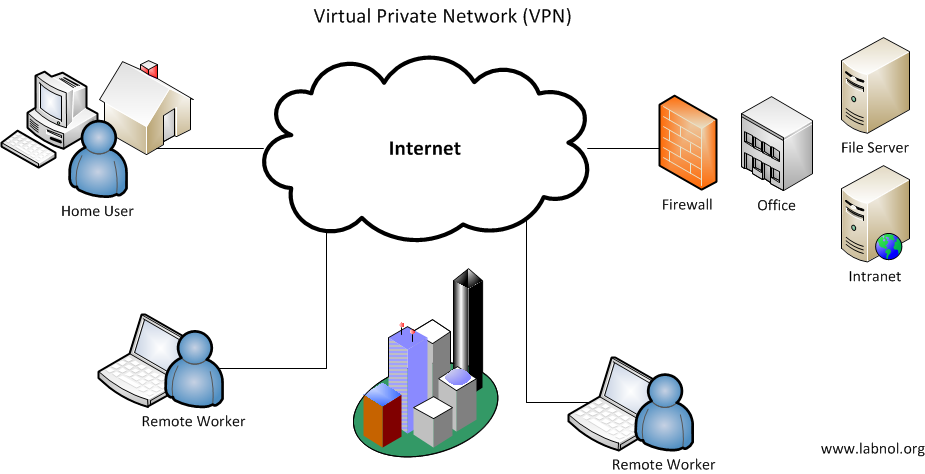Virtual Private Networks, or VPN for short, allow employees to securely connect their desktop or laptop computers to the office network from any location in the world using a regular Internet connection.
If you are working from home, you can connect to the corporate network over VPN and you'll have immediate access to your emails, internal web pages, network drives, and stuff that is otherwise only available from computers within the office premises. Some VPN clients also allow screen sharing and remote access to facilitate communication among team members.
Create a Virtual Private Network for Free
If you regular need to connect to your home computer(s) from the office or if you have a group of friends and family members with whom you share files quite frequently, you can consider setting up a virtual private network between all these computers.
While businesses generally invest in VPN solutions for companies like Cisco, we can create own VPN for free using Gbridge - this is a software only solution that is available for all versions of Windows and the best part is that it uses your Google Account for authentication.
Once you install this application*, sign in with your Gmail or Google Apps account. Then enter a hostname for your computer; this is what your computer will show up as to other computers that will connect to the VPN. Your hostname must be 8 characters long or less and include only letters, numbers, and/or dashes.
 PS:If you are using a DNS service like OpenDNS that does automatic typo correction, you may see a notification saying that it is interfering with Gbridge. You can either add an exception for Gbridge, or simply let Gbridge automatically raise its virtual adapter's binding order to override this.
PS:If you are using a DNS service like OpenDNS that does automatic typo correction, you may see a notification saying that it is interfering with Gbridge. You can either add an exception for Gbridge, or simply let Gbridge automatically raise its virtual adapter's binding order to override this.
Share Files and Folders
You'll now see a list of all your Google Talk friends listed in the Gbridge window, as well as a list of folders that you are current sharing. You can share files as well as chat with your friends directly in Gbridge. They do not have to install Gbridge to chat with you, but will need the software to access your shared files from their computer.
Gbridge has a sample folder shared by default, but can easily add others from the SecureShare tab. Simply select a folder and choose friends with whom you wish to share that folder with. They'll now will be able to browse the contents of that shared folder as well download files using a web browser.
Remotely Access another Computer
In addition to file sharing, Gbridge also let you to remotely access your other computers (or that of your friends) over VPN. You can do this via the built-in VNC client (called DesktopShare) or through Windows Remote Desktop. The latter option is only available if you are on XP Pro, Vista Business or Windows 7 Professional.
Simply select the DesktopShare option on the computer that you wish to control, click "Configure Gbridge DesktopShare," select who should access that computer and add a password. These people can now remotely access and control the computer.
Alternatively, create a common Google account and use it on both the computers - you can then remotely control the other computer without DesktopShare.
With GBridge, you can sync selected folders that you always have the same file on all your computer. This option may also be used to backup files on a remote computer.
Limitations of your VPN Setup
Gbridge requires Windows 2000, XP, Vista, and Windows 7 but there's no support for Mac or Linux machines. The application uses unsigned drivers, and while this will only prompt a security dialog in 32 bit versions of Windows, it won't install in 64 bit editions since these require signed drivers.
Gbridge is otherwise a brilliant solution. You can stream MP3 files, show photos and video without uploading them anywhere, remotely fix a problem on your friend's computer, access your home files from office or even unblock restricted sites. All this using your Google account.
 How to Setup your Own VPN or Virtual Private Network
How to Setup your Own VPN or Virtual Private Network
Alternatives may include Opera Unite, Purple Nova and Team Viewer.




0 Comments